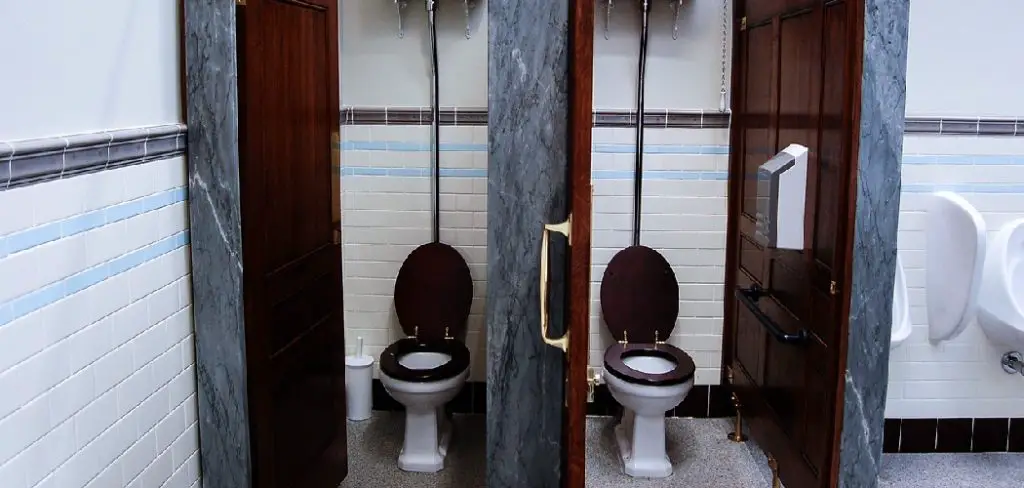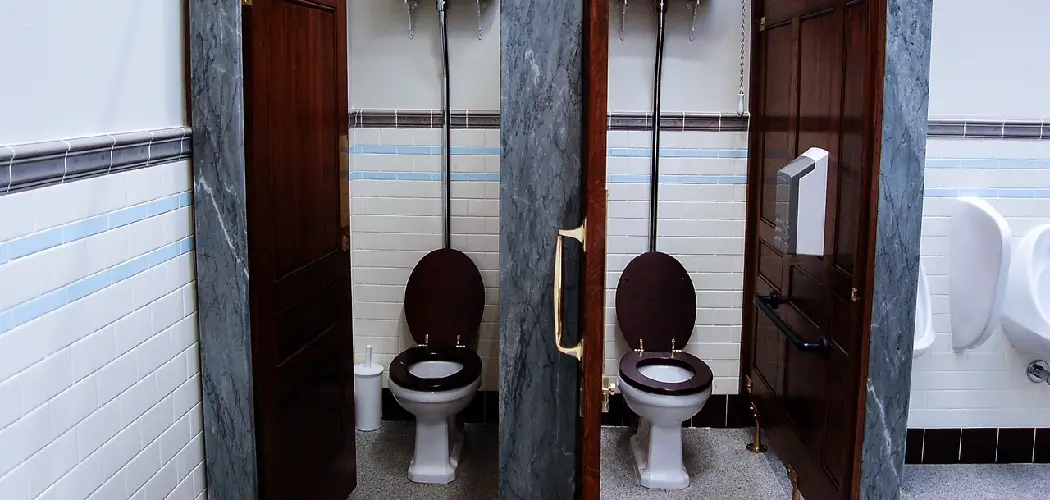Sometimes, poop can leave streaks in the toilet due to factors such as inadequate wiping or certain dietary choices. Streaks in the toilet can be caused by remnants of feces that weren’t completely wiped away, leading to smears when flushed.
Other contributing factors may include the consistency of the stool which can make it harder to clean, or consuming foods that promote stickier bowel movements.

Understanding Normal Poop
Understanding what constitutes normal poop can provide valuable insights into your overall digestive health. When you go to the bathroom, it’s natural to pay attention to how your poop looks, as it can offer important clues about your well-being. In this article, we will discuss the composition of normal stool and the various factors that can influence its appearance.
The Composition Of Normal Stool
Normal stool is made up of approximately 75% water and 25% solid matter, which consists of undigested food, bacteria, fiber, and other waste products. The appearance and consistency of your poop can vary depending on several factors, such as your diet, hydration levels, and gut health.
Here is an overview of the different components that make up the composition of normal stool:
| Component | Description |
|---|---|
| Fiber | Fiber is an essential part of a healthy diet, and it plays a crucial role in maintaining regular bowel movements. It adds bulk to your stool, making it easier to pass through the digestive tract. |
| Bacteria | The gut is home to trillions of bacteria, known as gut flora or microbiota. These bacteria aid in digestion, breaking down certain nutrients and producing beneficial compounds. |
| Undigested Food | Some food components, such as seeds, skins, and tough plant fibers, may pass through your digestive system without being fully broken down. These undigested food particles can be found in your stool. |
| Waste Products | When your body metabolizes nutrients from food, it produces waste products that are eliminated through the stool. These waste products can include substances like bilirubin, a pigment that gives poop its brown color. |
Factors That Influence Stool Appearance
Several factors can influence the appearance of your poop, potentially causing it to leave streaks in the toilet. It’s important to understand these factors to differentiate between normal variations and potential health concerns. Here are some key factors affecting stool appearance:
- Diet: Certain foods can contribute to changes in stool color and consistency. For example, consuming beets or artificial food coloring may result in a reddish or pinkish tint to your stool.
- Hydration: Staying hydrated is crucial for maintaining healthy digestion. Inadequate water intake can lead to harder, dryer stools that are more difficult to pass.
- Medications and Supplements: Certain medications or supplements can affect your poop, causing it to appear different in color or texture. It’s always advisable to consult with your healthcare provider if you notice any significant changes.
- Gut Health: Imbalances in your gut flora or digestive disorders, such as irritable bowel syndrome (IBS) or inflammatory bowel disease (IBD), can affect the appearance of your stool. These conditions may lead to diarrhea, constipation, or other abnormal bowel movements.
Being mindful of your poop’s appearance is an essential part of monitoring your digestive health. However, it’s important to note that variations in poop color, texture, or streaks in the toilet are usually harmless and transient. If you have any concerns or notice persistent changes in your stool, it’s always best to consult with a healthcare professional for proper evaluation and advice.
Possible Causes Of Streaks In The Toilet
Streaks in the toilet after you poop can be concerning and may leave you wondering about the underlying causes. While it’s normal for stool to leave some residue on the toilet bowl, persistent streaks could indicate certain factors affecting your digestive system. In this section, we will explore some possible causes of streaks in the toilet and how they can be related to digestive issues, dietary factors, hydration levels, medications, supplements, and underlying medical conditions.
Digestive Issues And Imbalances
Digestive issues and imbalances can contribute to streaks in the toilet. Certain conditions like diarrhea or insufficient digestion can cause stools to be loose or poorly formed, leading to more residue left behind. Factors such as irritable bowel syndrome (IBS), food intolerances, or inflammation in the digestive tract can also affect the consistency of your stool and increase the likelihood of streaks.
Dietary Factors
The food you consume plays a significant role in the appearance of your stool and can cause streaks in the toilet. A diet lacking in sufficient fiber can lead to harder stools that are more likely to leave streaks. On the other hand, excessive consumption of certain foods, such as spicy or greasy foods, can contribute to softer stools and more residue.
| Fiber-rich Foods | Examples of Foods to Limit |
|---|---|
| Vegetables | Spicy Foods |
| Fruits | Greasy Foods |
| Whole Grains |
Hydration And Water Intake Levels
Dehydration and inadequate water intake can contribute to streaks in the toilet. When your body is dehydrated, it tries to conserve water by extracting more fluids from your stool, which can result in harder and drier stools. These types of stools are more likely to leave streaks in the toilet after bowel movements. To maintain regular and well-formed stools, it’s important to drink an adequate amount of water throughout the day.
Medications And Supplements
Certain medications and supplements can affect the composition and consistency of your stool, leading to streaks in the toilet. Some antibiotics, pain medications, or iron supplements, for example, can cause changes in your digestive system and result in looser stools. If you have recently started taking a new medication or supplement and notice streaks in the toilet, it may be worth discussing with your healthcare provider.
Underlying Medical Conditions
In some cases, streaks in the toilet can be a sign of an underlying medical condition. Conditions such as inflammatory bowel disease (IBD), celiac disease, or gastrointestinal infections can affect your digestion and stool appearance. If you are experiencing other symptoms alongside the streaks, such as abdominal pain, changes in bowel habits, or unexplained weight loss, it is important to consult with a healthcare professional for a proper evaluation and diagnosis.
Frequently Asked Questions For Why Does My Poop Leave Streaks In The Toilet
Why Does My Poop Leave Streaks In The Toilet?
When poop leaves streaks in the toilet, it can be due to several reasons. One possibility is that you are not properly wiping after using the toilet. Another reason could be the consistency of your stool, which may be too sticky or greasy.
Lastly, it could be a sign of an underlying health issue like a digestive disorder or inadequate fiber intake.
What Can I Do To Prevent Streaks In The Toilet?
To prevent streaks in the toilet, make sure to thoroughly wipe after each bowel movement, using enough toilet paper. Consider adding more fiber to your diet to help form firmer stools that are less likely to leave streaks. If the issue persists, consult a healthcare professional to rule out any underlying health conditions.
Does Diet Play A Role In My Poop Leaving Streaks In The Toilet?
Yes, diet can play a significant role in the consistency and appearance of your poop. Consuming a diet high in processed foods, lack of fiber, and inadequate water intake can result in soft and sticky stools that are more likely to leave streaks in the toilet.
Adding fiber-rich foods and staying hydrated can help improve your bowel movements.
Conclusion
To sum up, understanding why your poop leaves streaks in the toilet is crucial for maintaining good gut health and hygiene. Factors such as insufficient fiber intake, dehydration, and improper wiping technique can contribute to this issue. Making dietary changes, staying hydrated, and adopting proper hygiene practices can help minimize streaks and promote overall digestive wellness.
Remember, a healthy gut means a healthier you.

